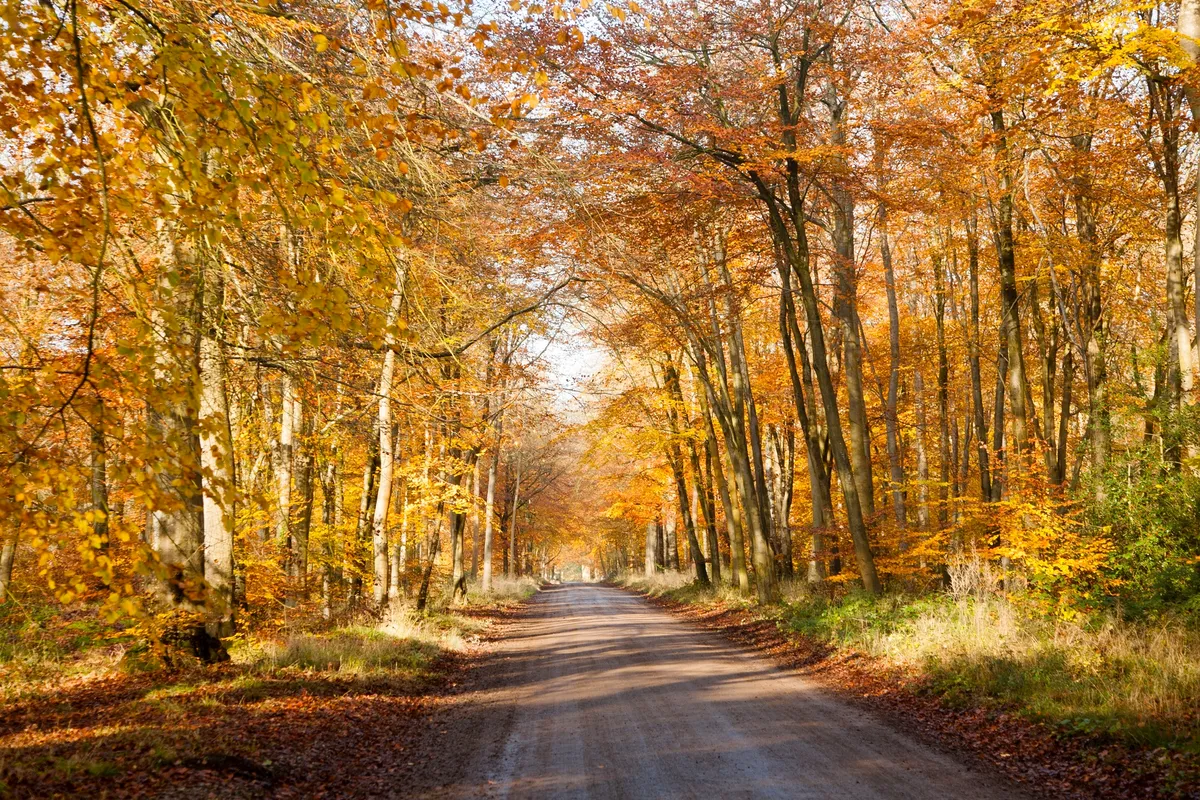A few miles south of the historic town of Marlborough lies a sprawling 2,750-acre forest, once a popular hunting area where royalty chased stags past trees that still stand today.
Savernake is now in private ownership (but open to the public and managed by the Forestry Commission) and is believed to hold the highest concentration of veteran trees in Europe. Several of these specimens have been bestowed with names that reflect their age and history, including the imposing Big Belly Oak, one of the oldest oak trees in Britain.
Please be aware that this is a popular walk with a small car park, so visitors should be prepared to turn around and come back another time if the car park is full. Please do not park on roadsides, private property or block gates.
Looking for more walks in Wiltshire? Check out our routes at Caen Hill Locks, Castle Combe and Avebury.

Savernake Forest walk
5.9 miles/9.5km | 110m ascent | 3.5 hours | easy-moderate
1. Bumble Oak
Park in the Postern Hill car park, where you will easily find the Bumble Oak – not the most impressive of the named trees, but certainly the easiest to locate – and take the path opposite into the forest.
2. White Road Oak
After half a mile, turn left at the crossroads to find the towering White Road Oak, a statuesque tree with a girth of 6.95m. Continue down this track, taking the next path on your right, curiously named Long Harry.
Oak tree guide
Get to know one of Britain's most iconic trees, including which species of oak grow in the UK, how to identify them, and how long oak trees live for with our guide to oaks.

3. Saddle Oaks
After a diagonal track crosses the path, walk 100m then take a small grassy track on your left to a clearing where you will find Saddle Oak 1 and Saddle Oak 2, so named because of the near horizontal growth of their immense boughs. Return to the main path and continue for half a mile, peering to your left to spot other veteran trees lurking deeper in the woods.
4. Grand Avenue
Turn right when you reach the drive. At 3.9 miles, the beech-lined Grand Avenue is the longest in Britain and part of the landscape design implemented by Capability Brown. Arriving at Eight Walks, a striking meeting point of paths, take the top-right path, passing through a grassy clearing where red kites are often spotted circling overhead.

5. Kings and queens
After half a mile, take a grassy overgrown track on your right (shortly after a small path on the left). At the fork, turn right to discover the newly planted Replacement King Oak, then return to the left fork to find the Spider Oak, Original Queen Oak and New Queen Oak in quick succession. When you reach a crossroads, turn right and continue for 100m before the track meets the main road, taking a small path on your right by a dead, ivy-covered tree.
6. Big Bellied Oak
There is no official path to the Big Belly Oak, but 100m after passing an overgrown track, look left for a rough trail that crosses a fallen tree. Follow this towards the road to reach this 1,100-year-old colossus, its 10.8m trunk held together with a wide metal belt. Retrace your steps, then continue along the path until you reach a driveway; turn right then left at the next crossroads. After the path bends to the right, fork left then right as the path begins to climb.

7. Old paunchy
Further down this path you will pass a distinctive tree with a bulbous base, known as Old Paunchy, believed to be around 700 years old. Keep an eye out for small muntjac deer, often spotted in the woods, as you continue on to reach a track ahead. Turn left, then immediately right on to a small path.
8. Cathedral Oak
Along this path your will find the magnificent Cathedral Oak, over 1,000 years old, along with several other imposing oak and beech trees. Continue through the clearing, turning right when you meet a track to return to the car park.

Savernake Forest map
Savernake Forest walking route and map


